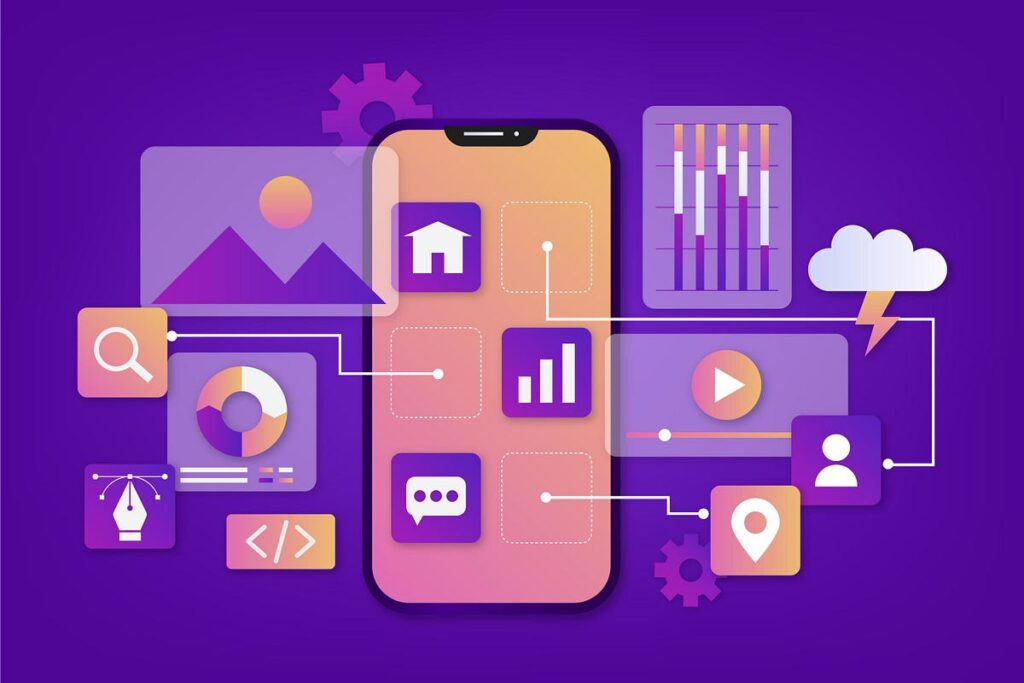Building a mobile application is not just about promoting your business or brand, but it is more like a collection of tech stacks and trends it follows. The integration of the technologies in the app defines the expertise of the mobile app development company in Houston and the developers that work for them. You must not rush in making choices because if you own the business, it is important to make an informed decision that affects your company, whether directly or indirectly.
Every single factor affects the cost of app development in Houston; therefore, picking the right tech stack and following the right trend helps you build a powerful mobile app. The development of the application means stepping into the innovative era that highly focuses on speed, intelligence, and smooth interaction with the users globally. And meanwhile, for modern users, what kind of software captivates them? It is important to provide fluid and responsive apps so they get the most out of the app.
To enable businesses to scale faster and deliver an exceptional solution along with a streamlined user experience, focusing on the ongoing market trends and tech stacks is essential, which is all covered in this blog. So be sure to stick around till the end.
Tech Stack Essentials for High-Performance Mobile Apps
A tech stack refers to the tools and technologies used to ensure smooth development as well as deployment of a mobile app while including the programming language, development frameworks, database, and server infrastructure. It is important to understand how the chosen tech stack impacts the project speed and performance, long-term cost, and above all, how easy it is for the app to handle the traffic in future in terms of upgrades, maintenance, and support.
Defining Your App’s Requirements Before Choosing Technologies
Before choosing the right tools and technologies for the app to be developed, you must know the kind of app you’re building and what category of audience you are creating the app for. There are applications for almost everything, from a simple loyalty app to a complex logistics platform, so you should ask yourself a key question like which devices this app would support, how many users you are expecting in the end, and whether it’s a quick launch or a long-term product. This approach will help you find the right tool and technology that aligns with your app’s needs and requirements, not just the trendiest ones.
Native vs. Cross-Platform Development: Which Approach Fits Your Business?
Now that you know what you are looking for in the app, the key choice that should be made next is deciding between native and cross-platform. What is the key difference between Native and cross-platform? Native apps are built differently, which too offers top performance and full access to device features, but the drawback that occurs is, it requires more time and budget. On the other hand, Cross-platform frameworks like React Native and Flutter let you build one app for both platforms while making development faster and more cost-effective. Above all, it is ideal for simpler apps or quicker launches. The right option depends on several priorities such as speed and budget, performance, and platform-specific features.
Crafting Seamless Experiences– Best Front-End Frameworks for Speed & UX
The front end of the app is the very first screen of the app to which the user interacts. This ensures the streamlined user experience with the collection of elements such as multiple screens, buttons, animations and overall app layout. Tools for native apps like SwiftUI and Jetpack Compose offer smooth and device-specific experiences, whereas if you are willing for the cross-platform app then options like Flutter and React Native provide shared UI solutions that work well.
The Backbone of Your App– Scalable & Maintainable Back-End Choices
The back end is not visible to the end-users because it’s all the developer’s work to do such as storing data, sending notifications and connecting with third-party services. For real-time features, Node.js is a popular choice, while for the heavy data and analytics Django works really well. Moreover, with its quick setup, Firebase suits smaller or early-stage apps. What matters for the development team is to stay secure, scalable, and easily manageable.
Houston’s App Revolution: Future-Driven Tech Trends to Watch
Now, if we have a look at the ongoing trend for app development in Houston, the developers are increasingly utilizing AI and machine learning features that include chatbots, personalization, predictive analytics, as whatnot for native apps. While cross-platform frameworks such as Flutter and React Native remain popular for faster iOS and Android releases.
By encouraging mobile app development in several industrial sectors such as healthcare, energy, logistics, and more includes IoT app connections for real-time device, system monitoring, also, AR/VR is becoming popular in retail, real estate, and training applications. On the infrastructure side, developers are utilizing serverless architecture and cloud-native solutions through AWS and Azure to increase resilience and scalability.
Final Words;
App development in Houston has evolved beyond simply creating a product; it now involves selecting the right technologies and staying aligned with the latest industry trends to effectively meet both business goals and user needs. Embracing innovations such as AI, IoT, AR/VR, and cloud-native infrastructure has become essential for organizations of all sizes to make strategic and informed choices. By leveraging these modern tools and trends, mobile app development not only results in robust and efficient applications but also helps businesses stay competitive and well-positioned for future growth and technological advancement in an ever-evolving app market.



